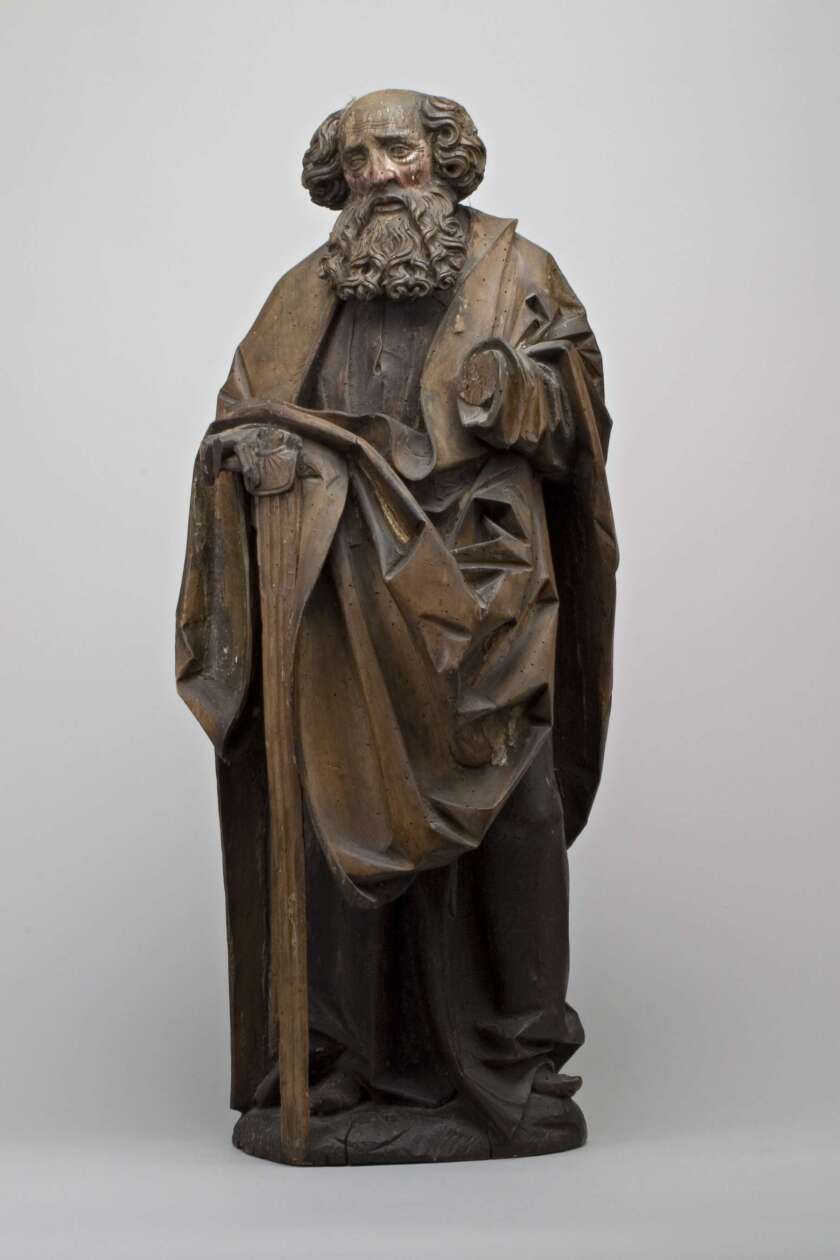Saint Paul

WORKSHOP OF VIET STOSS (1450–1533)
An aged Saint Paul gazes outward with an earnest expression. His right hand clutches a sword, his traditional symbol, a reference to his martyrdom. The rounded curls of the saint’s hair and beard, as well as the voluminous folds of drapery that flow from the figure’s rounded form, evidence the artist’s mastery of woodcarving. The angle of the saint’s head, the position of the book, and the dynamic drapery lines create a sense of movement that heightens the vitality and immediacy of the piece. The original colored paint, of which only a few gold patches remain, would have further enlivened the saint’s image.
Veit Stoss was one of the most important sculptors of the late Gothic era in Germany. His energetic, naturalistic forms reflect the transitional moment between the stiffer Gothic-era artistic styles and the more expressive German Renaissance. Stoss was sought after for commissions by churches, civic organizations and private patrons in both Germany and Poland. Steady commissions often necessitated artists to supervise a workshop of apprentice sculptors to assist in the work. An artisan in the workshop of Veit Stoss may have created this sculpture, under the artist’s direction.
Curricular Resources
The MOA has created suggested discussion prompts and assignments for BYU CIV faculty and students to use. Each assignment is based on themes that correspond with GE learning outcomes.
View Curricular Resources Related to This Work:
16 Century Germany